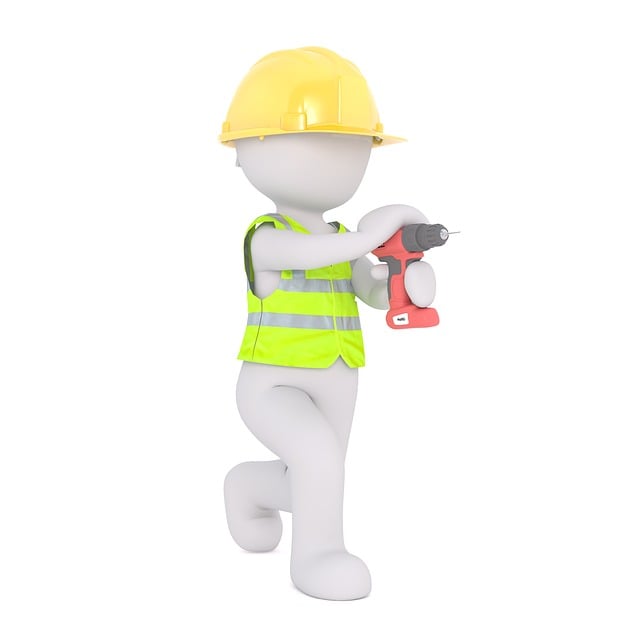Ground-Penetrating Radar (GPR) is a non-invasive technology leading the way in professional utility locating. It transmits high-frequency electromagnetic waves into the ground, capturing reflected signals to create detailed cross-sectional images of buried utilities like pipes and cables. This real-time data enables professionals to safely map underground structures before construction or excavation, significantly reducing time and costs compared to traditional methods, minimizing landscape disruptions, and ensuring higher accuracy rates. GPR is particularly crucial in urban areas with complex ground conditions, enhancing efficiency and safety in modern field work.
“Unveiling the secrets beneath our feet, Ground-Penetrating Radar (GPR) emerges as an indispensable tool for accurate professional utility locating. This cutting-edge technology penetrates the earth’s surface, providing detailed images of underground utilities. In this comprehensive guide, we explore GPR’s underlying principles and its numerous advantages in precision mapping. From enhancing safety to streamlining field work, GPR revolutionizes utility line detection, ensuring efficient and effective professional services.”
Understanding Ground-Penetrating Radar (GPR): The Technology Behind the Tool
Ground-Penetrating Radar (GPR) is a powerful tool for professional utility locating, offering precise and non-invasive imaging of underground structures. This technology works by transmitting high-frequency electromagnetic waves into the ground, which then bounce back after interacting with different materials and objects beneath the surface. By analyzing these reflected signals, GPR can create detailed cross-sectional images of the subsurface environment.
The GPR system consists of a transceiver, an antenna, and data processing software. The transceiver generates radar pulses that are transmitted through the ground, while the antenna focuses and directs these waves. As the energy penetrates the soil or other materials, it encounters utilities like pipes, cables, or foundations, causing the signal to scatter or reflect back. The received signals are then processed by specialized software, which interprets them into high-resolution images, revealing the location, depth, size, and type of objects beneath the surface. This real-time data aids professionals in safely and accurately identifying and mapping utilities before construction or excavation projects.
Advantages of GPR for Utility Line Detection: Precision and Efficiency
Ground-penetrating radar (GPR) offers unparalleled precision and efficiency in the realm of professional utility locating. Unlike traditional methods that rely on physical excavation, GPR provides a non-invasive approach to detecting buried utilities such as water, gas, electric, and telecommunications lines. This technology sends electromagnetic waves into the ground, which then bounce back from different materials and objects, including underground infrastructure. By analyzing these reflections, professionals can accurately map out the location, depth, and type of utility lines beneath the surface.
The advantages of GPR in utility line detection are multifaceted. It significantly reduces the time and costs associated with manual excavation, minimizing disruptions to landscapes and infrastructures. Moreover, GPR ensures higher accuracy rates compared to other locating methods, thereby decreasing the risk of damaging buried utilities during construction or renovation projects. This advanced technology is particularly valuable in urban settings where the ground is densely layered with various utilities, making safe and efficient locating a critical task for professionals.
Application and Implementation: How Professionals Utilize GPR in Field Work
Ground-penetrating radar (GPR) has become an indispensable tool for professionals in the field of utility locating. This advanced technology enables them to accurately detect and map underground utilities, including water, gas, electric, and telecommunications lines, with remarkable precision. By transmitting high-frequency electromagnetic waves into the ground, GPR can create detailed images of the subsurface, allowing professionals to pinpoint the location, depth, and even material composition of buried utilities.
Implementing GPR in field work involves a meticulous process. Professionals begin by assessing the site and identifying potential utility locations based on available maps and historical data. They then set up the GPR system, ensuring proper antenna placement and calibration for optimal performance. During scanning, they carefully maneuver the antenna across the area of interest, collecting data that is subsequently processed using specialized software. The generated images are then interpreted to identify and mark the utilities accurately, facilitating safe and efficient excavation or construction projects without damaging critical infrastructure. This application not only enhances efficiency but also plays a crucial role in minimizing disruptions and ensuring the safety of personnel and equipment.
Ensuring Safety and Accuracy: Best Practices for Effective Utility Locating with GPR
Ensuring Safety and Accuracy in Professional Utility Locating with GPR involves adhering to best practices that prioritize both precision and caution. Before initiating any ground-penetrating radar (GPR) scan, thorough site preparation is crucial. This includes clearing the area of loose debris and potential hazards, as well as marking existing utility lines visually or through digital records for reference during the process. Trained professionals should always conduct these scans, utilizing specialized equipment that meets industry standards to guarantee accuracy in detecting buried utilities.
During the scan, maintaining a safe distance from active lines is paramount. GPR operators must follow strict protocols for avoiding live wires and other critical infrastructure. Regular calibration of the GPR system ensures accurate data collection, while systematic scanning patterns help prevent oversights. Post-scan data analysis should be conducted by experts who can interpret complex radar signals, ensuring that detected anomalies indeed correspond to utility lines. This meticulous approach not only enhances the safety of personnel but also fortifies the reliability of the entire professional utility locating process.
Ground-penetrating radar (GPR) has revolutionized professional utility locating, offering unprecedented precision and efficiency. By providing detailed images of underground infrastructure, GPR enables faster, safer, and more accurate detection of utility lines, reducing the risk of damage during construction projects. Embracing this technology ensures that professionals can navigate complex underground landscapes with confidence, ultimately fostering a safer and more sustainable built environment.
